The WARSHIPS IFR ‘Guide to the Royal Navy 2020’ – its ninth edition since 2002 – is now available to buy. It offers a potent mix of high impact imagery by ace photographers, warship profiles and operational reports for each type of units, along with commentaries and analysis by top writers. Here we present – as a tempting taster of its content – an edited extract from the publication’s ‘State of the RN 2020’ leader commentary by our panel of editors.
STATE OF THE RN 2020
‘The First Sea Lord has a clear vision.
Does the UK Government?’
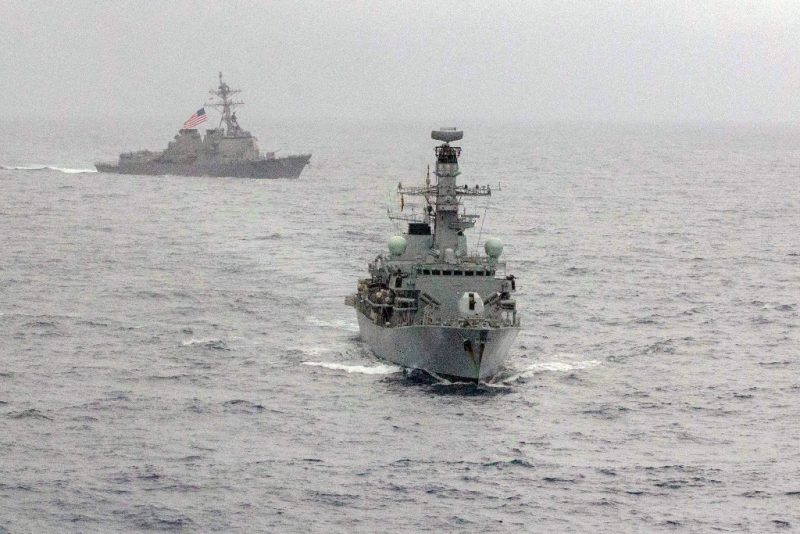
It was no coincidence that at the annual Defence & Security Equipment International (DSEI) exhibition in London’s docklands, ex-soldier Ben Wallace, the latest MP to hold the office of UK Secretary of State for Defence, opened his keynote speech by talking up Britain’s place as a nation “alive to the global threats …” He went on to point out that Britain has “the world class industrial base and the game-changing capability to deal with the danger.”
Meanwhile, Admiral Tony Radakin, three months into his appointment as First Sea Lord, closed his speech by reinforcing that message by observing, “it’s about Britain: a Global Britain, with a Global Navy.”
Also at DSEI, Anne-Marie Trevelyan, Minister for Defence Procurement – and at the time also newly appointed – reeled off a list of recent contracts for defence equipment. She concluded with a reference to Global Britain spreading its wings, looking to the far horizon and the opportunity to work alongside allies worldwide for peace and security.
Via his DSEI speech the new First Sea Lord demonstrated his grasp of naval-strategic necessities confronting the UK. In the weeks since he assumed office as the uniformed boss of the RN, Admiral Radakin has consistently set out the enablers that underpin his five transformation priorities. These are (his capitals): Infrastructure, Support, People, Training and Acquisition. He is also looking to restructure the Navy’s headquarters while the transformation priorities focus on: the North Atlantic, Carrier Strike, the Future Commando Force, Forward Presence along with Technology and Innovation.
In the North Atlantic, the First Sea Lord feels the RN must ensure freedom of movement for the nuclear deterrent and counter a renewed Russian underwater threat by investing in upgrading sonars as well as introducing novel and disruptive technologies. The Admiral explained he is seeking a “whole approach [that] seeks to change ASW from delivery by individual platforms, to a battlespace of networked sensors.” Carrier Strike means changing the Royal Navy into a “Carrier Task Group Navy”, which the First Sea Lord explained, “will allow us to project our power around the world. And at a level alongside our American and French allies…on behalf of Defence and the nation.” The Future Commando Force builds on the Royal Marines to create what Admiral Radakin termed “5th Generation Commando Warriors” and will see more Royal Marines deployed forward and ready to respond to emergencies.
Forward Presence, according to Admiral Radakin, “is about being able to demonstrate a Global Navy, project influence and respond to threats more quickly” along with overseas basing. When it came to Technology and Innovation, the First Sea Lord was less specific beyond suggesting it should be “stronger, bolder and much more impactful.”
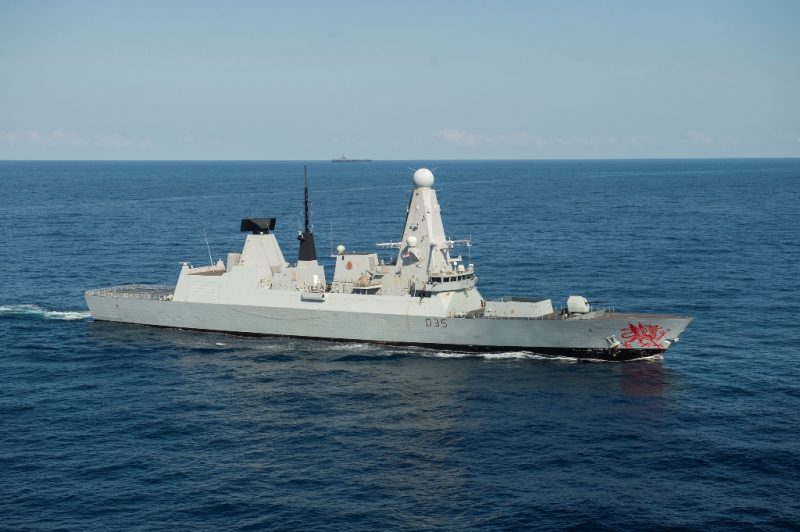

Fortunately, the First Sea Lord has been dealt a good hand of cards. Seemingly, after the calamitous and misbegotten Strategic Defence and Security Review (SDSR) in 2010, the Royal Navy is growing for the first time in many years and will benefit from a substantial recapitalisation programme. This growth includes: the decision to replace the nuclear deterrent submarines; the second aircraft carrier HMS Prince of Wales sailing on sea trials; orders for the Type 26 global combat ship (ASW frigate) and the Type 31 general purpose frigate; as well as new Offshore Patrol Vessels and support ships; and a new aircraft fleet both in the fixed-wing and rotary-wing sense.
However, as a former Second Sea Lord and Chief of Naval Personnel, Admiral Radakin will know the Royal Navy is beset with manpower problems but he rightfully pointed out that the RN has “great people, doing great things.” Beyond his fine words, however, there are in reality too many already lean-manned ships that deploy with gapped billets. There are significant shortages in particular skills, ranging from cooks to engineers. Furthermore, while it is the older hands who in a crisis form the backbone of a ship’s company, the ratio of experienced men and women is falling in relation to the number of younger, less seasoned sailors. This thinning out is being hidden by the number of ships in long-term dockyard hands, currently five Type 23 frigates. Two Type 45s, along with three RFAs are said to be currently laid up. The British fleet cannot achieve all the wonderful things Admiral Radakin has set out if it does not have the people, regardless of shiny news ships.
The harsh reality is that, even with new vessels, force levels are too low for securing forward presence and power projection on an enduring and significant basis, especially if aiming to venture (and stay) in harm’s way. The future Type 26 and Type 31 frigates have smaller ships’ companies than the already lean-manned Type 23s which they replace (and even their crews have risen over the years), but they do not enter service for some years.
The strategic environment confronting the Royal Navy as it enters the third decade of the 21st Century is deeply ominous. There is the distinct threat of conflict in the Middle East as Iran continues its provocations, particularly targeting shipping in and around the Strait of Hormuz, while Russia challenges NATO in Euro-Atlantic. In Asia-Pacific, the possibility that confrontation with China over the South China Sea could escalate cannot be dismissed, while North Korea also remains a threat to regional and international security.
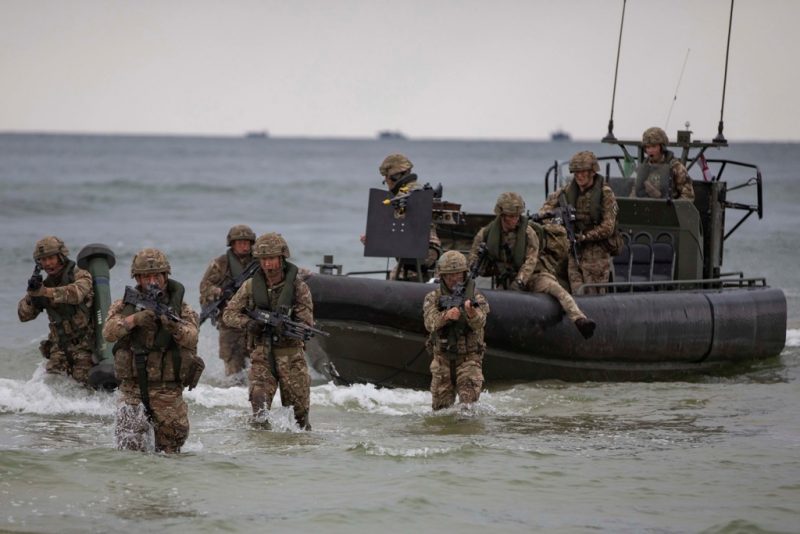
The requirements of operating in a highly dynamic strategic environment against a wide range of threats, including great powers, needs to be considered. Most importantly, the Royal Navy, if it is to protect and project British interests globally as government policy dictates, must be properly equipped, manned and supported.
For all the First Sea Lord’s fine words and laudable objectives that is, even now, far from being the case. There have been decades of cutbacks and hollowing out of capabilities, with a failure at the highest level in the political leadership to create a coherent defence and foreign policy, and which new equipment can only partially rectify. The challenge into 2020 is to continue repairing the damage and formulate a proper, joined-up naval strategy.
The First Sea Lord has a clear vision. Does the UK Government?
For the full version of this commentary buy the WARSHIPS IFR ‘Guide to the Royal Navy 2020’, which is available from high street retailers and also direct from the publisher.


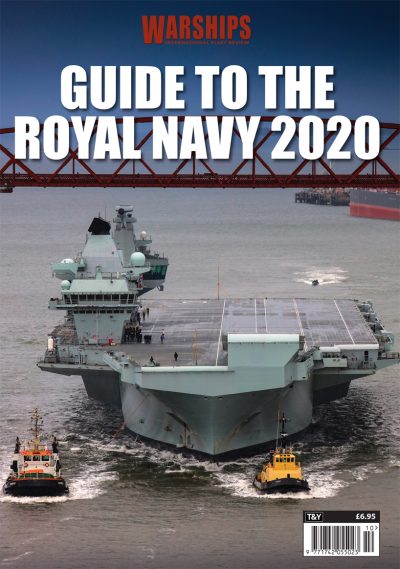
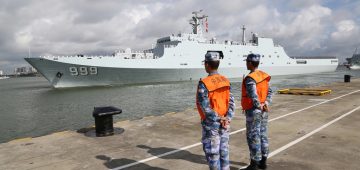




Comments
Sorry, comments are closed for this item